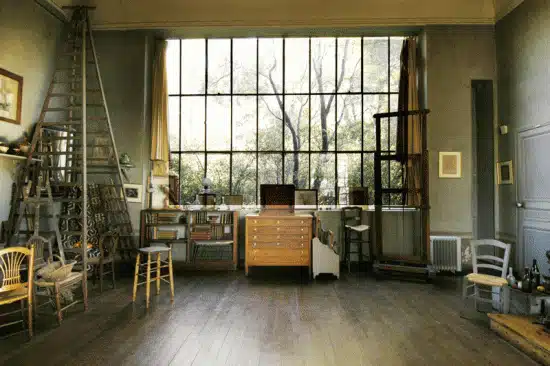How Lighting Affects the Mood in a Short-Term Rental
When guests book a short-term rental, they are looking for more than just a place to stay, they are seeking an experience.
Whether it’s a cosy getaway, a business trip, or a family vacation, the ambience of a rental plays a crucial role in shaping their stay.
While furniture, decor, and amenities contribute to a rental’s atmosphere, lighting is often overlooked despite its powerful effect on mood and perception.
The right lighting can make a space feel warm, inviting, and relaxing, while poor lighting can leave it feeling cold, unwelcoming, and uncomfortable. From setting the tone for relaxation to boosting energy for productivity, understanding how lighting affects mood can help short-term rental owners enhance their guests’ experiences, leading to better reviews, repeat bookings, and increased revenue.
In this guide, we’ll explore how different types of lighting impact mood, the best lighting practices for different areas of a short-term rental, smart lighting solutions, and common mistakes to avoid.
The Psychology of Lighting and Mood
Lighting has a direct impact on human emotions and well-being. Different lighting tones and intensities can evoke specific feelings, influencing how comfortable and relaxed a guest feels in a space. Here’s how:
- Warm lighting (yellow/amber tones): Creates a cozy and intimate atmosphere, perfect for relaxation and unwinding after a long day.
- Cool lighting (white/blue tones): Enhances focus and productivity, making it ideal for workspaces and kitchen areas.
- Bright lighting: Increases alertness and energy, useful in areas where guests need to be active, like the bathroom or entryway.
- Dim lighting: Encourages relaxation and a calming ambiance, suitable for bedrooms and living rooms.
Understanding these psychological effects allows rental owners to create an environment that aligns with the type of experience they want to offer guests.
See This: Best Locations in Nigeria for Short-Term Rentals
Types of Lighting and Their Effects on Mood
– Natural Light
Natural light is the most powerful mood enhancer. Exposure to daylight boosts serotonin levels, improving mood and sleep quality. Here’s how to maximize natural light in a short-term rental:
- Use sheer curtains or blinds to allow ample sunlight into the space.
- Place mirrors strategically to reflect light and make rooms feel more open.
- Keep windows clean and unobstructed.
- Choose light-colored walls and furnishings to amplify natural brightness.
– Warm Lighting (Yellow/Amber Tones)
Warm lighting creates a welcoming and intimate ambiance, perfect for relaxation. It is ideal for:
- Living rooms: Encourages a cozy, comfortable atmosphere for socializing.
- Bedrooms: Helps guests unwind before sleep.
- Dining areas: Enhances a pleasant and inviting mealtime setting.
– Cool Lighting (White/Blue Tones)
Cool lighting is associated with alertness and focus, making it ideal for:
- Workspaces: If your rental caters to business travelers, a well-lit workspace with cool lighting can boost productivity.
- Kitchens: Ensures visibility for cooking and food preparation.
- Bathrooms: Provides a clean, fresh look and is useful for grooming and makeup application.
– Accent Lighting
Accent lighting highlights architectural features, artwork, or decor, adding character to the space. Common uses include:
- Wall sconces for an elegant touch.
- LED strip lights under cabinets or furniture for a modern feel.
- Pendant lights over dining areas for a stylish statement.
Best Lighting Practices for Short-Term Rentals
Every area in a short-term rental serves a different purpose, requiring specific lighting techniques to enhance the guest experience.
– Entryway
The entryway sets the tone for a guest’s stay. A well-lit entrance creates a welcoming atmosphere.
- Use bright, warm lighting to make guests feel at ease upon arrival.
- Consider motion-sensor lights for added convenience and security.
- Add a stylish pendant light or chandelier for a touch of elegance.
– Living Room
Guests use the living room for socializing, relaxing, and entertainment. A combination of lighting sources works best here:
- Overhead lighting (chandeliers or ceiling fixtures) for general illumination.
- Floor or table lamps with warm bulbs for a cozy ambiance.
- Dimmable lights to adjust brightness levels based on mood and time of day.
– Bedroom
Good bedroom lighting enhances relaxation and sleep quality.
- Use warm, soft lighting to create a calming environment.
- Bedside lamps with adjustable brightness are perfect for reading before sleep.
- Consider installing blackout curtains to help guests control natural light exposure.
– Kitchen & Dining Area
The kitchen and dining area should be well-lit for both safety and aesthetics.
- Install bright, cool lighting for cooking and food preparation.
- Use pendant lights over dining tables for a stylish touch.
- Under-cabinet lighting improves visibility while adding a modern feel.
– Bathroom
Guests appreciate a well-lit bathroom that feels clean and spa-like.
- Use bright, neutral lighting to ensure clear visibility.
- Add backlit mirrors for an elegant touch.
- Dimmable options can help create a relaxing atmosphere for baths.
Smart Lighting Solutions for Short-Term Rentals
Smart lighting enhances convenience, security, and energy efficiency. Here’s how rental owners can incorporate it:
- Dimmable LED Bulbs: Allows guests to adjust brightness to suit their mood.
- Smart Bulbs with Voice Control: Integrates with devices like Alexa or Google Home for seamless control.
- Motion Sensor Lights: Useful for hallways, entryways, and bathrooms.
- Programmable Lighting Scenes: Pre-set different lighting moods for relaxation, work, or socializing.
- Energy-Efficient Options: LED bulbs consume less power and last longer, reducing maintenance costs.
Common Lighting Mistakes to Avoid
Even with the best intentions, lighting mistakes can negatively impact a guest’s experience. Avoid these common pitfalls:
1. Harsh or Dim Lighting
- Too-bright lighting can feel clinical and unwelcoming.
- Insufficient lighting can make a space feel dull and uninviting.
- Solution: Use layered lighting—combine ambient, task, and accent lights.
2. Mismatched Lighting Tones
- Mixing warm and cool lights can create a jarring effect.
- Solution: Maintain consistency within each space—use warm tones in living areas and cool tones in workspaces.
3. Overlooking Task Lighting
- Poorly lit kitchens and workspaces can frustrate guests.
- Solution: Add under-cabinet lights in kitchens and desk lamps in work areas.
4. Ignoring Dimmable Options
- Fixed lighting settings may not suit every guest’s preference.
- Solution: Provide dimmable lights to offer a customizable ambience.
5. Neglecting Outdoor Lighting
- Poorly lit exteriors can feel unsafe.
- Solution: Install porch lights, pathway lighting, and motion-activated security lights.
Read This: What You Need to Know About Short-Term Rental Regulations in Nigeria
Conclusion
Lighting plays a crucial role in shaping the mood and overall experience in a short-term rental.
By understanding the impact of different lighting types and implementing smart lighting strategies, rental owners can create an inviting, comfortable, and functional environment that appeals to guests.
Whether it’s maximizing natural light, using warm lighting for cosiness, or incorporating smart lighting for convenience, small adjustments can significantly enhance guest satisfaction, leading to better reviews and higher booking rates.
If you’re a rental owner, now is the time to evaluate your lighting setup and make improvements that will elevate your property’s appeal.

